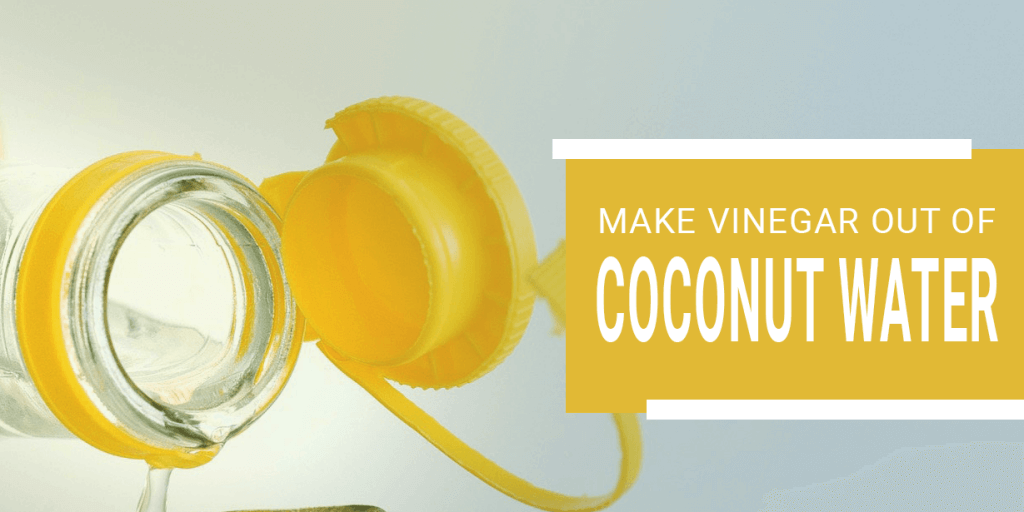A remarkably and instructively typical by-product from coconut is vinegar. The Philippines has a very diverse source of fruits and spices and to add the skillful and innovative hands of our countrymen, an endless selection of flavorful food ingredients is ours to take advantage of. There is a wide variety of organic vinegars in the local market but coconut vinegar is one of the most well-known. Generally, it is regarded as one of the best tasting varieties of vinegar by common Filipinos.
In most cases, coconut water is abundantly available and sometimes, excess amounts only spoil and are wasted. Trying a DIY coconut vinegar at the comfort of your own home is one way to combat wasting. Also, one may decide to choose home-made organics as they are guaranteed natural, meaning healthier for the body. Below are guidelines to follow if you want to try making coconut vinegar on your own. The recipe is a standard suggestion by most but of course, one is free to make changes depending on the desired result.
RELATED ARTICLE:
Resources Needed
- Coconut water – the coconut water to be used should be fresh. The liquid from young green coconuts is always preferred.
- Sugar – percentage of sugar is ideally no more than 10% of the total amount of coconut water to be used. Given 4 cups of coconut water, ¾ cup of sugar is an advisable amount.
- Vinegar Starter – a vinegar starter could be a vinegar mother, a naturally unpasteurized vinegar or a SCOBY (symbiotic culture of bacteria and yeast). Most of these are available at tea shops or stores selling organic products. These are also available for sale online, which is a more convenient find for some.
- Cheesecloth or Katsa – this will be used for straining and covering the mixture. Prepare one to be used for straining and another for covering the containers. Should you lack cloth, make sure to wash it after using it as a strainer. Then dry it first before using it as a container cover.
- Large Container or Jar – glass jars are suggested for the fermentation process. During the acetic acid formation process, barrels and earthenware are preferred to achieve better flavors.
- Rubber band or string – this will be used to tie the cloth when covering. Any type of cord that could tighten up the lid of a container will do.
RELATED ARTICLE:
Procedures
- Prepare coconut water and strain using a clean cheesecloth.
- Dissolve the sugar in coconut water. You may do this in a casserole to be used when heating.
- Pasteurize the mixture for no more than 20 minutes. The ideal temperature should range from 60 to 65°C. This is done to kill microorganisms.
- Transfer the mixture in a clean glass jar, half filled. Set aside to cool and cover using a clean cheesecloth.
- Let the liquid ferment for 1 to 2 weeks. Some are adding yeast to the mixture to speed up the process. The liquid is ready once the solution smells like alcohol.
- After fermenting, transfer the mixture again in a casserole and pasteurize. Make sure to strain some solids formed should there be any. Cool the solution for some time.
- Prepare a container for the acetic acid formation process. Pour in the cooled alcoholic solution and add the vinegar starter. Set aside for a month or more until the desired sourness is achieved.
- Once satisfied with the flavor, pasteurize the mixture once again before transferring into a bottle/jar for storage. Your coconut vinegar is now ready!
Coconut vinegar has multiple culinary uses. For us Filipinos, the recipes are just endless as most of our simple dishes always turn scrumptious because of this magic ingredient. In the present times, where staying healthy is equally being fabulous too, learning to do a home-made organic product is a plus. In trying times lately brought by the Covid-19 pandemic, hoarding of healthy organic products in supermarkets is rampant. Making coconut vinegar is one life hack to consider since it can substitute apple cider vinegar — a product that many health enthusiasts are going crazy about. In comparison to apple cider vinegar, it is proven to be similarly nutritious.
Visit our blog for more contents like this or contact us for inquiries!

